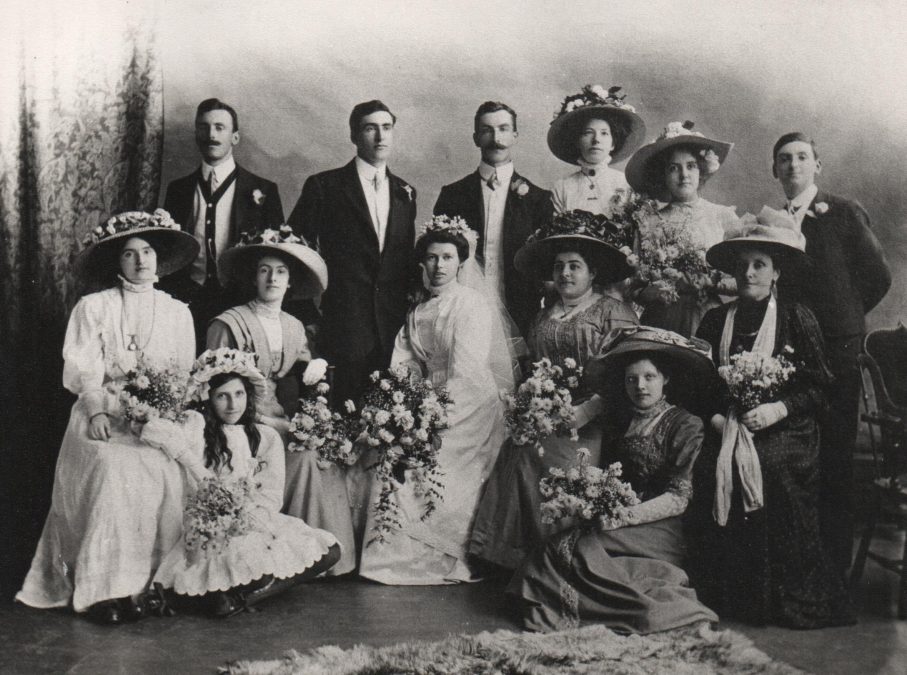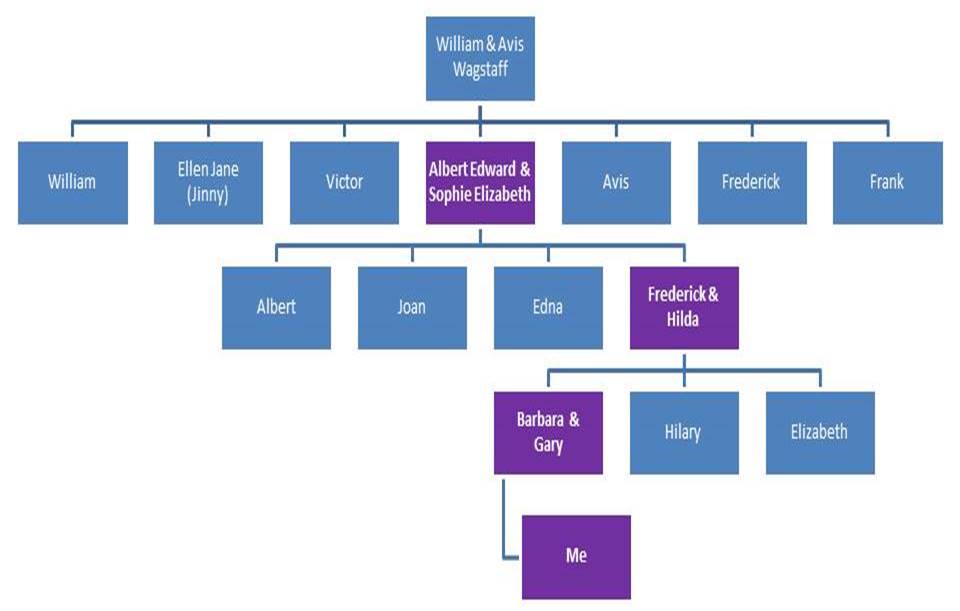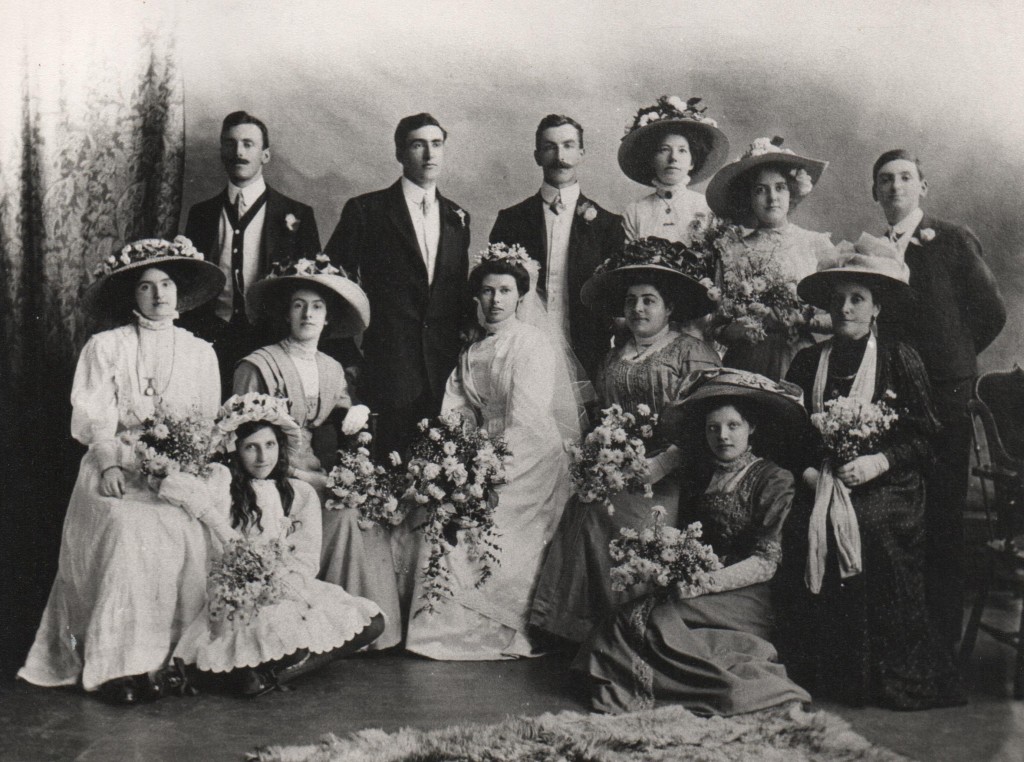Imagine planning your wedding without the internet, without your smart phone, or without Pinterest! Goodness, imagine if you didn’t even have a ball point pen to quickly jot down ideas in a notebook! Rewind a hundred years and you’d be planning a wedding without technology and the advancements we are lucky to have nowadays.
However the 1910s did see the invention of some amazing things that we now take for granted like the bras that we wear and anything with a zip. Thanks to the inventions of that decade we don’t have to be without electricity in our homes, telephones, fridges, vacuum cleaners, plasters, stainless steel, tea bags, instant coffee, pyrex and pop up toasters. Transport wise the 1910s saw amazing firsts for flying machines and motor cars becoming more widespread. Plus for entertainment the first crossword puzzle came about in the 1910s as well as hand cranked movie cameras, neon lighting and fortune cookies.
I’ve recently been thinking about this era as my mother has been researching our family history and came across an amazing photograph of my grandfather’s parent’s wedding from 1911. We were amazed at the grandeur of their wedding considering that they both worked in service and so wouldn’t have been able to afford such a grand wedding.
Think Downtown Abbey or Upstairs Downstairs. My ancestors would have definitely been the ‘downstairs’! The 1911 census said that one out of every seven employed persons was a domestic servant. Yet despite their position, their wedding was quite a lavish affair. My Grandad often said he thought that the ‘upstairs’ helped with the wedding and also that the chief bridesmaid’s employer helped too.
Their wedding certificate said that they lived in Scott Ellis Gardens. This was a stone’s throw away from St John’s Wood in London, home of Lord’s Cricket Ground and near the famous Abbey Road studio. Scott Ellis Gardens was built on land owned by Lord Howard de Walden.
Their wedding took place on 5th June 1911 at St Mark’s Church, Hamilton Terrace, NW8. It was on a Monday, which according to the traditional rhyme was said to mean the bride would be healthy (watch out for more on wedding traditions and superstitions in future blog posts) and the bride was driven there by coach and pair (a coach drawn by a pair of horses). What struck me about the date is that it is almost exactly 100 years before my own wedding on 5th August of 2011.
1911 was a time before any world wars, when there was no NHS, no vote for women and you could’ve gone out to work at 13 years old. It saw the launch of the ocean liner RMS Titanic in Belfast (which we know didn’t enjoy the happiest of voyages), there was a big heatwave, as well as the Coronation of George V in June.
My Great Grandad, Albert Edward Wagstaff was 20 at the time of his wedding and worked as a woollen warehouseman at a large firm called Holland and Sherry in London. He married my Great Nan, Sophie Elizabeth Piggott who was 22. They were at least a decade younger than the age I was when I walked down the aisle, although they were relatively old to marry in those days.
How different my dress looked compared to my Great Nan’s. Hers was a long sleeved, high necked and flowing gown versus my strapless, sleeveless, tight fitting dress. Her bridesmaids wore flowers on broad brimmed hats and wore their own Sunday best outfits, versus my bridesmaids with sophisticated chignons and custom made dresses for the day. My Great Nan had a floral crown, which wasn’t a trend when I got married 4 years ago, but is already having a revival now. One thing that I was keen to mirror was to have a big bouquet which my Nan in the 1940s also had on her big day.
The men were wearing their best suits (which didn’t match with each other) and we can see that the tradition of buttonholes hasn’t altered much in 100 years. However my Great Grandad does look particularly dapper. He handled very good quality materials at work (mostly in suitings for gentlemen and ladies costumes) and was often able to buy remnants. So he always had very good suits made for himself and beautiful costumes for his wife. Perhaps this is why they look so smart on their wedding day.
I love looking at how weddings have changed over the years and also how some traditions have continued to be upheld. (Take a look at our Wedding time capsule post for details of other trends.) Despite the technology and tools we have nowadays, our wedding photos don’t look too dissimilar to those of a hundred years ago and weddings remain constant events in our society with many common and recurring features. Maybe things haven’t changed too much in the last 100 years after all.
Back row (left to right): William (Albert’s older brother), the groom Albert Edward, William (Albert’s father), 2 ladies unknown, Frank (Albert’s youngest brother who went missing in the war)
Middle row: Avis (Albert’s sister), Jinny (Albert’s sister), the bride Sophie Elizabeth, Ruth (best friend and chief bridesmaid who was a cook at the Royal Sussex County Hospital in Brighton), Avis (Albert’s mother who my own Grandad was terrified of her and called the Countess!)
Front row: children unknown
This post is dedicated to my Grandfather who sadly passed away this month aged nearly 92. He was an inspirational man and played an important and influential part of my life. He was kind, generous, wise, fun loving and always thinking of others.
Over the years, Grandad’s moving speeches (and bright orange shirts) were always so poignant and he would always end a speech by saying how proud we had made him. On this occasion, I feel I’m allowed to say that Grandad did us proud.




